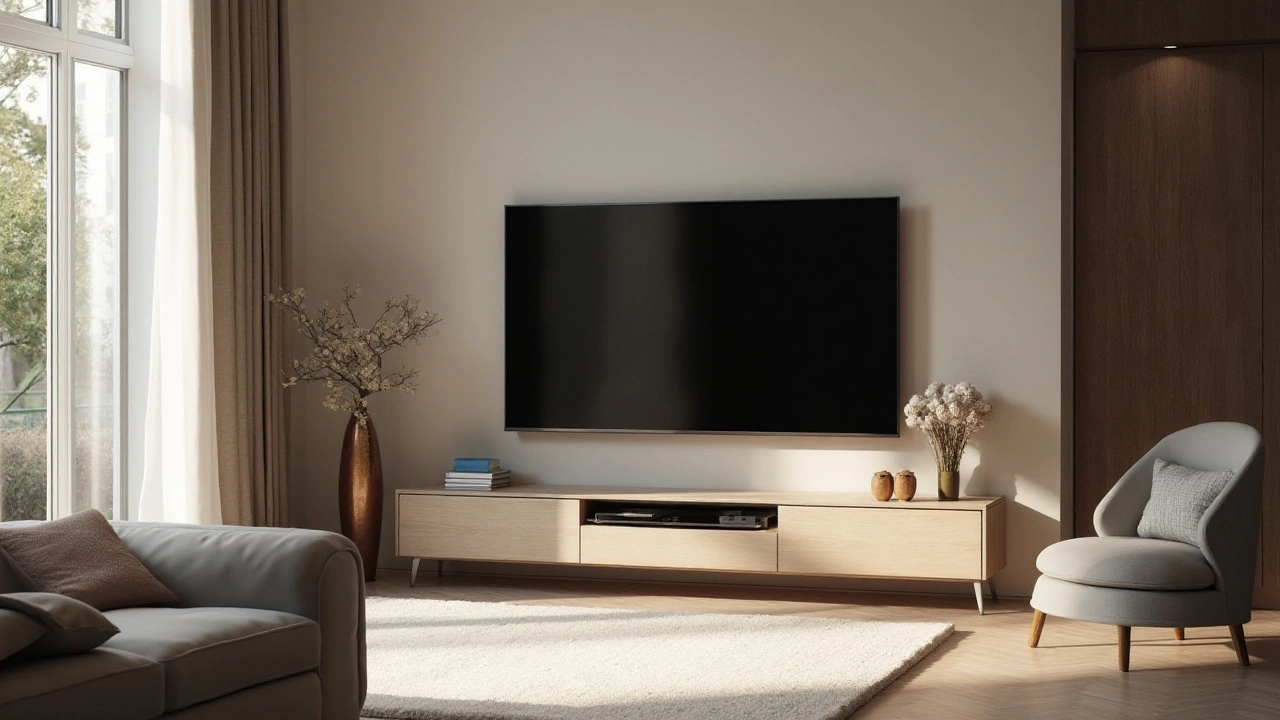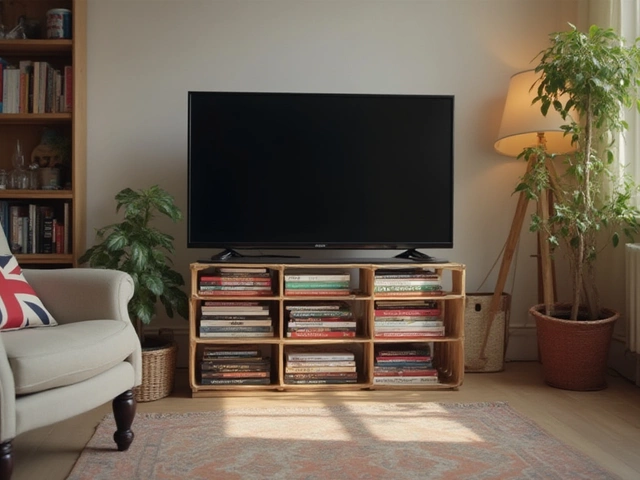TV Stand Guide: Size, Height and Placement Made Simple
Choosing a TV stand can feel overwhelming, but it doesn’t have to be. The right stand keeps your screen at a comfortable height, fits the space and adds a bit of style. Below you’ll get quick steps to measure, decide between low or high stands, explore clever alternatives and avoid common placement mistakes.
How to Pick the Right Size
First, measure the width of your TV. Add a few inches on each side so the unit looks balanced and you have room for cables. Depth matters too – a stand should be at least as deep as the TV base but not stick out too far into the room. For height, aim for the screen’s middle to sit about 42‑48 inches from the floor; this matches the average eye level when you’re sitting.
Once you have those numbers, check the product specs. Most retailers list width, depth and height clearly. If you’re buying a wall‑mounted TV, you still need a low profile piece or console to hold speakers, game consoles and media players. The guide on "TV Stand Size: How Big Should It Be For Your Wall Mounted TV?" walks you through those exact calculations.
Low vs High TV Stands: What Works Best?
A low stand gives a sleek, modern look and keeps the viewing angle close to the floor. It’s great for large rooms where you want the TV to blend into the background. However, if your couch is low or you watch from a recliner, a low stand can cause neck strain.
High stands raise the screen to eye level for most seating positions. They’re perfect for traditional living rooms with higher sofas or for setups that include a soundbar below the TV. The downside is they take up more vertical space and can dominate a small room.
Test it out by sitting on your favorite chair and holding a book at eye level. Where does the book sit? Match the stand height to that spot. That tiny experiment saves you from buying the wrong height.
If you can’t decide, consider an adjustable TV console with shelves that can be raised or lowered. This gives flexibility as your furniture layout changes.
Creative Alternatives to a Traditional TV Stand
Not a fan of a bulky stand? You have options. A sturdy bookshelf can double as a media hub – just keep the TV centered and use the shelves for books, décor and equipment. A wall‑mounted floating shelf offers a minimalist look while freeing floor space.
For a budget‑friendly fix, the "Smart Ways to Prop Up Your TV Without a Stand" article suggests using a sturdy metal bracket or a repurposed console table. Just make sure the surface can hold the TV’s weight and is level.
Another idea is to place the TV on a tall, narrow sideboard. This adds storage for DVDs, remotes and gaming consoles without the visual bulk of a wide console.
Where Not to Put Your TV
Even the perfect stand can fail if the TV is in the wrong spot. Avoid placing it directly opposite a window – glare will make it hard to see. Also steer clear of high‑traffic areas where people might bump into the stand.
Keep the TV away from heat sources like radiators or sunlight‑filled spots, as heat can degrade the screen over time. Finally, ensure there’s enough clearance behind the unit for ventilation and cable connections.With these tips, you can pick a TV stand that fits your room, matches your viewing height and looks good without a fuss. Happy shopping!





